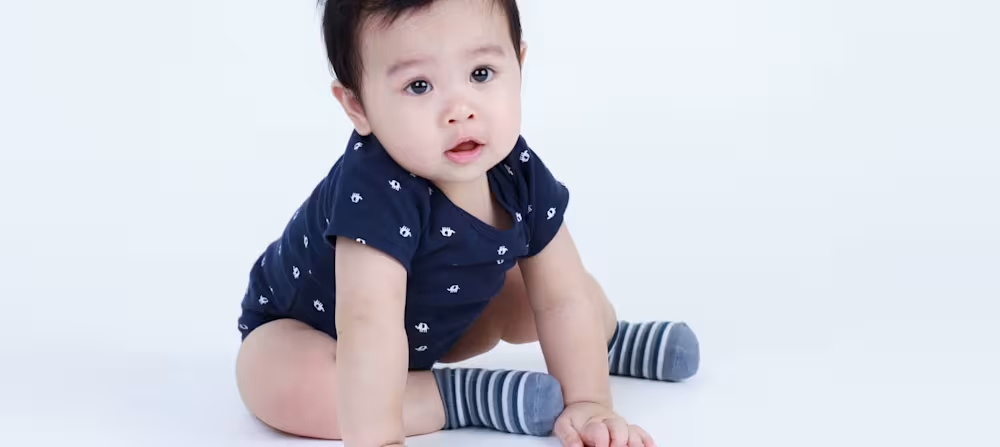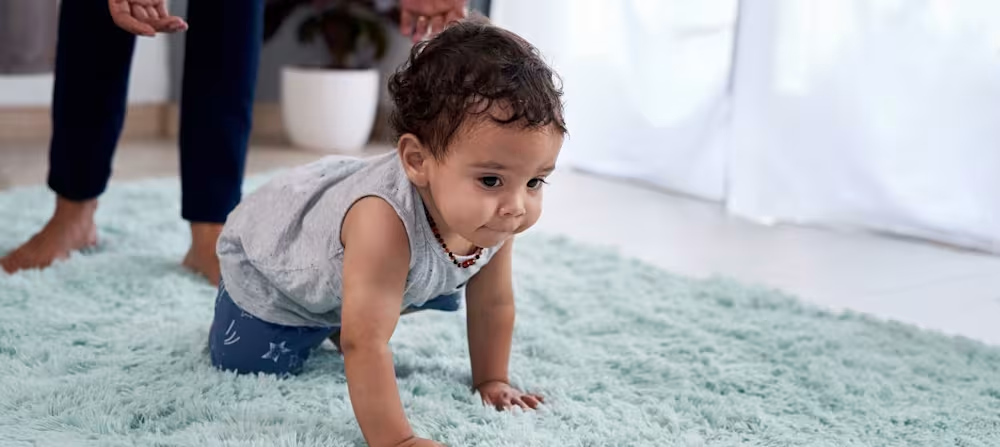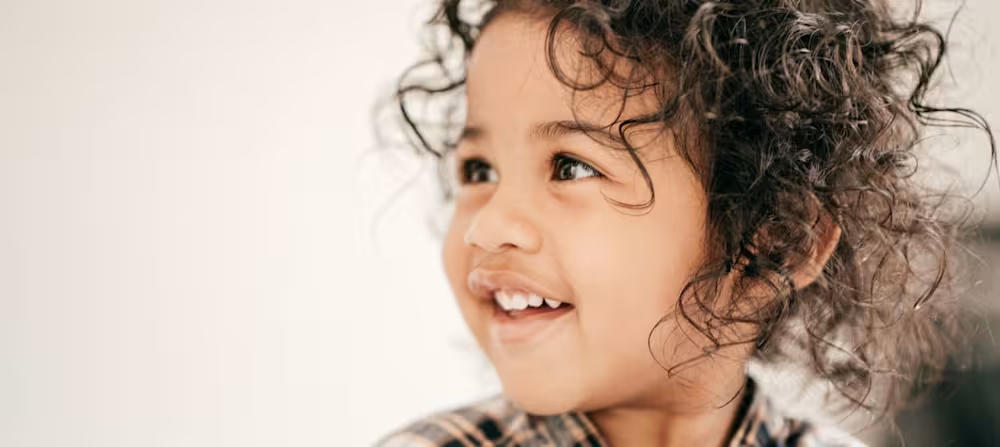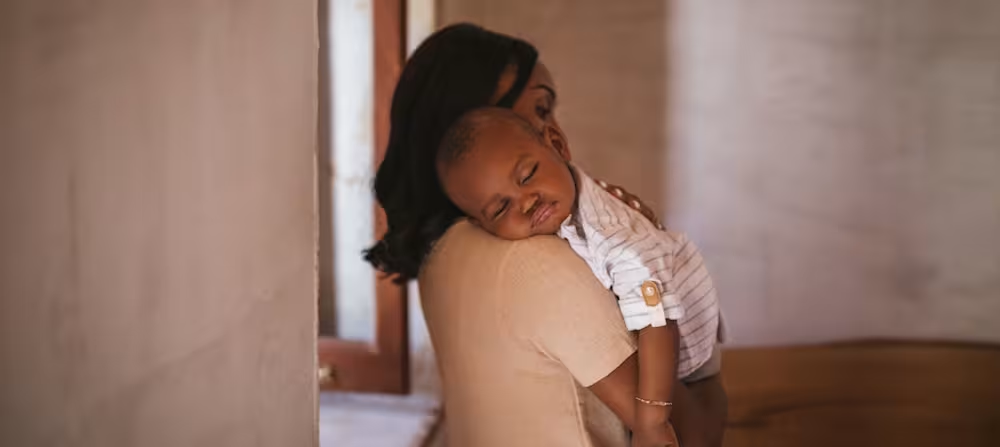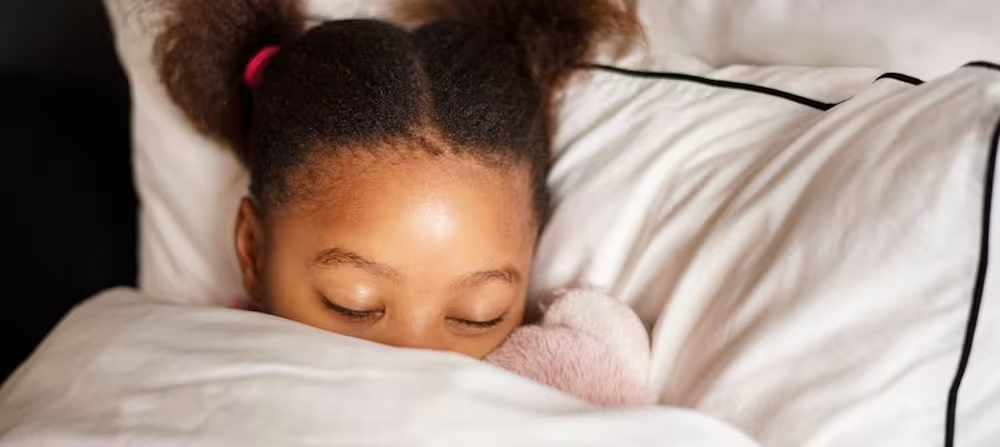When your baby starts walking: 6 tips to encourage walking
Updated Dec 29, 2025

Alongside their first smile and first word, starting to walk is the BIG one, eh? Those first steps. You may have been poised with your camera ready for a while now!
It’s a big milestone for babies, and often the culmination of months of amazing progression in learning how their bodies sit, roll, move, get up, and then start to bear weight.
It’s easy to ask ourselves lots of questions at this stage. Perhaps about the stages of walking, or wondering whether your little one has a bit of a different style to the other children you know.
Editor's note
We would like to preface this article by emphasizing the importance of recognizing that each child is unique and develops at their own pace. While we strive to provide helpful information on average milestones, it is crucial to remember that there is a wide range of normal development. Your child's individual needs and circumstances may influence their walking journey.
Walking stages
For many little ones, their path to walking follows some fairly predictable steps, however for others, they may move faster or slower through the steps and even miss out one or two and just make the leap.
Some kiddos may master the art of standing independently and be quite happy sticking there for a while. Typically, children tend to follow the following stages when learning to take their first steps:
Pulling to stand
Turning and looking while standing (but with one hand holding on to a person or object to steady themselves)
Standing independently, hand free
Cruising along furniture (with growing confidence and speed)
Walking with support from an adult (two hands)
Walking with support from a walking aid (push-along toy)
Walking with one-handed support
Taking their first few steps!
Walking on even ground, then progressing to less even ground and the outdoors.
6 tips and tricks to encourage your baby to walk
Go barefoot!
Walking is complex and all the muscles, tendons, ligaments, and bones have to become accustomed to this new style of movement []. Our body also needs to understand where our feet are and what they’re doing! Going barefoot helps this development. As cute as those baby shoes are, try to let your little one practice these skills shoe-free.
Use toys to provide interest and encouragement.
Your kiddo can turn and look or reach out in the direction you’d like them to move in. Intriguing objects work too! Does your little one like the TV remote? Hold it out right beyond their reach.
Utilize your furniture.
You can position pieces of furniture close together to provide a path and encourage cruising along the furniture! Be their guide and indicate where to go. As they practice their newfound cruising skills and start to gain confidence, you can start to increase the gap between the items of furniture adding the next level of challenge.
Think about the flooring.
Some surfaces are naturally slippery, whether that's a glossy floor tile or a laminate on the floor. This is harder to grip for your little one and may make it more of a challenge.
If you’re encouraging the early stages of walking then carpet is ideal. You can bring in trickier surfaces as they get more confident. In the meantime, a rug or even a yoga mat may be helpful for your baby to grip.
Consider the use of a push-along walker.
Pick one that they can push along, like a trolley with bricks and blocks in it rather than one they can sit in and self-propel. The AAP [] has called for a ban on the manufacture and sale of sitting baby walkers with wheels (self-propelled ones).
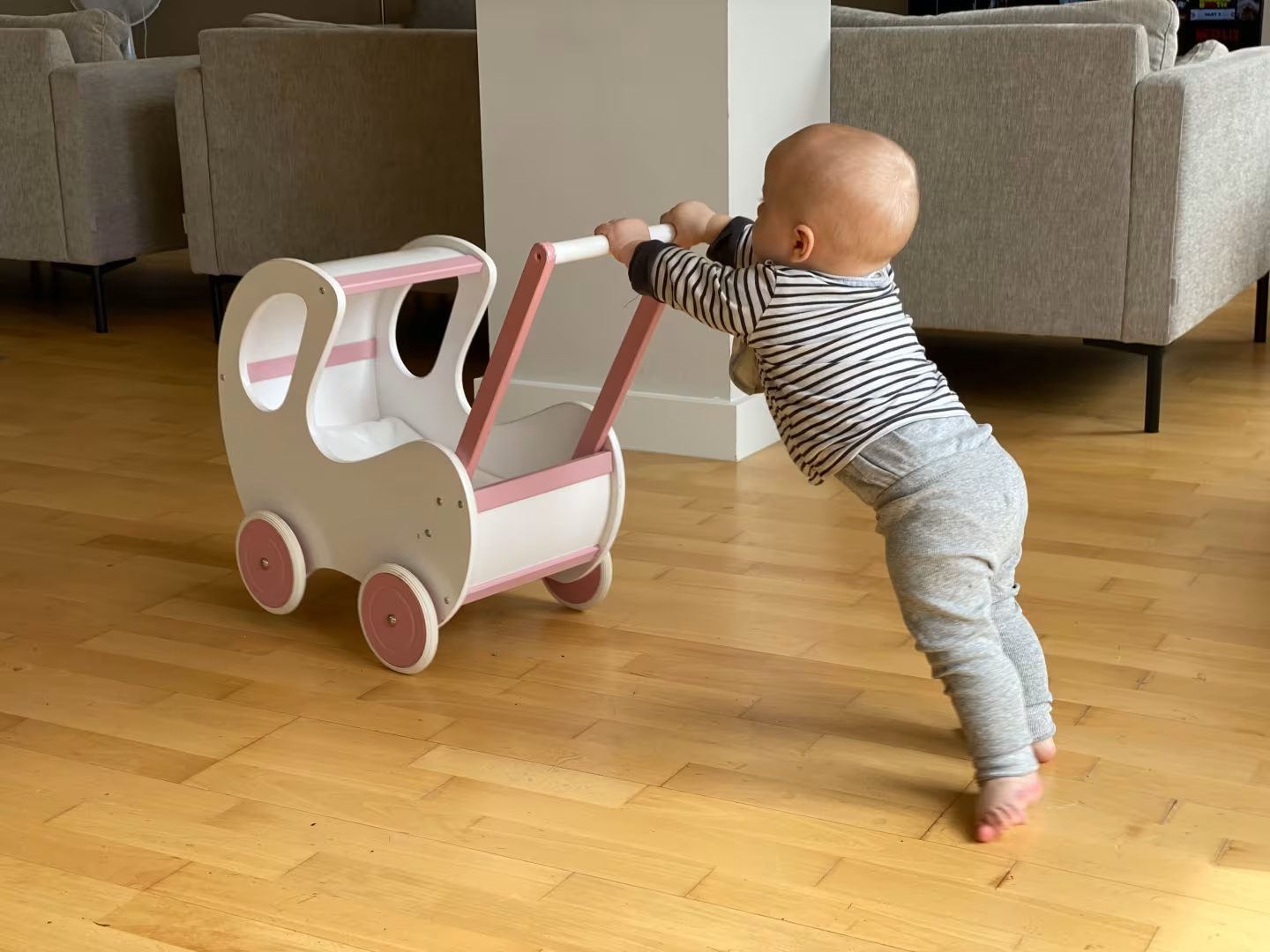
Steady them first.
If your baby is standing with their back against a piece of furniture or a wall, then sit in front of them and encourage them to reach out and start that forward movement
Remember that emotions may transfer. Project confidence and encouragement. If they take a little tumble it's a natural part of the process! Sing songs, clap, and encourage your little one to enjoy the process.
Walking styles
1) The toddle: The toddler “toddle” is the most obvious style of walking in this age group, and also the most likely.
Typically their legs will be wide and there's a real effort made with a little delay before moving one leg and then the other. As they get a little quicker, the “toddle” becomes a little more pronounced until they start to gain more control.
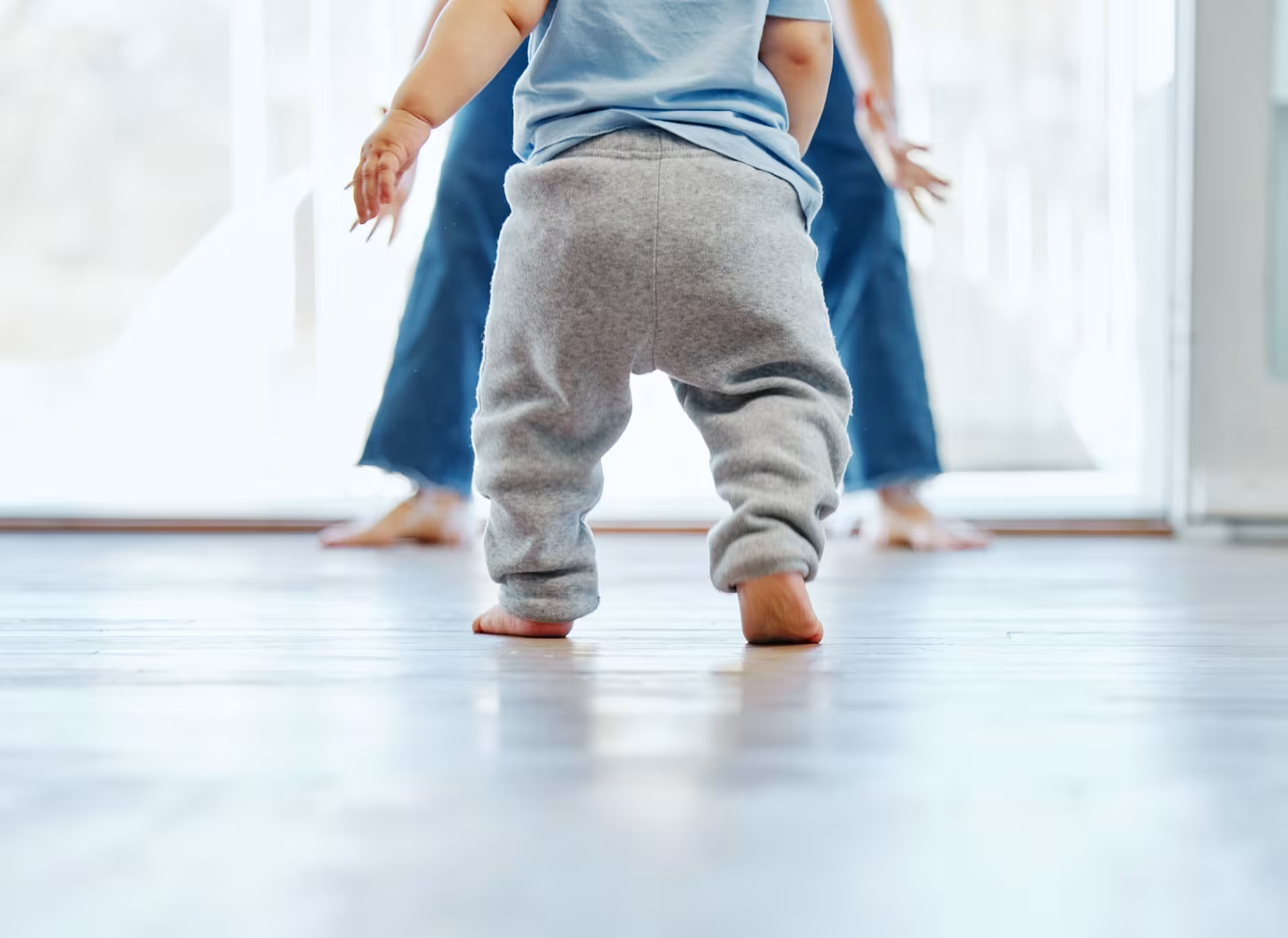
2) The cowboy: You may also notice your toddler walks a little more like a cowboy! Some kiddies have bow legs where their ankles touch but their knees are further apart. This is considered to be a normal stage of development, gradually becoming less distinctive over time, although if you’re concerned about the amount of bowing, please do discuss this with your child’s doctor.

3) The duck: Some children also walk like a duck with their toes turned out. It's also known as “out-toeing” and they can look a little clumsy while walking. Then there’s also the opposite, children who walk with their toes turned in!
For both, this is usually just a short period and the body will self-correct. Again, if you remain concerned, best to have a discussion with your pediatrician.
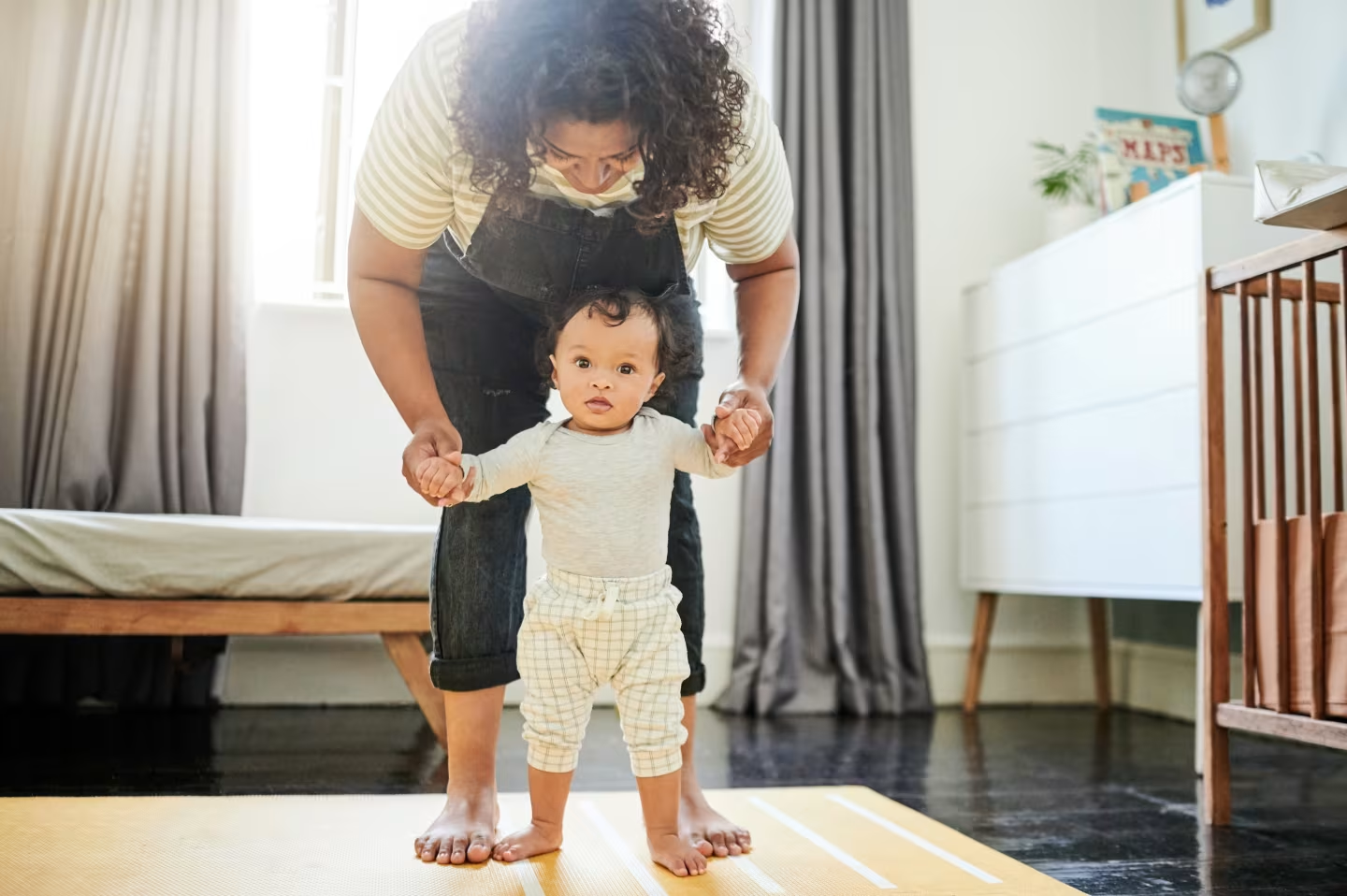
4) Toe walking: Are they on their tippy toes? This is also quite normal and they’re learning to walk in different and more complex ways. This also may feel more comfortable to them in the early stages of building all those muscles in the feet and legs.
However, if this seems to be the only (or main) way your child walks, or they struggle to put their heels on the floor (or look uncomfortable when they do) then discuss it with your doctor.

Walking styles: When to consult with your pediatrician
Asymmetry: Talk to your medical provider if you notice any asymmetry, especially if they are dragging one leg or one foot is turning in.
Repeated falls: Some tripping and falling are absolutely part of the learning process in childhood and bumps and bruises are part of the natural course of learning. However, if your little one is consistently falling and tripping then please raise this concern with your child’s doctor.
Discomfort or pain: Any limping, pain, or discomfort when learning to walk is something that we should be discussing early on with the pediatricians.
Does walking affect sleep?
Yes, it can! In fact, any big development, whether that’s intellectual or physical, can affect your child’s sleeping pattern. Often they get excited and want to practice their new skills at nap time or at night. This may make drifting off to sleep more difficult or result in more night wakings or early mornings.
This phase is often temporary and will resolve once the skill has been mastered.
Walking FAQ
Share article:
Note: The content on this site is for informational purposes only and should not replace medical advice from your doctor, pediatrician, or medical professional. If you have questions or concerns, you should contact a medical professional.
5 Sources
Share article:
